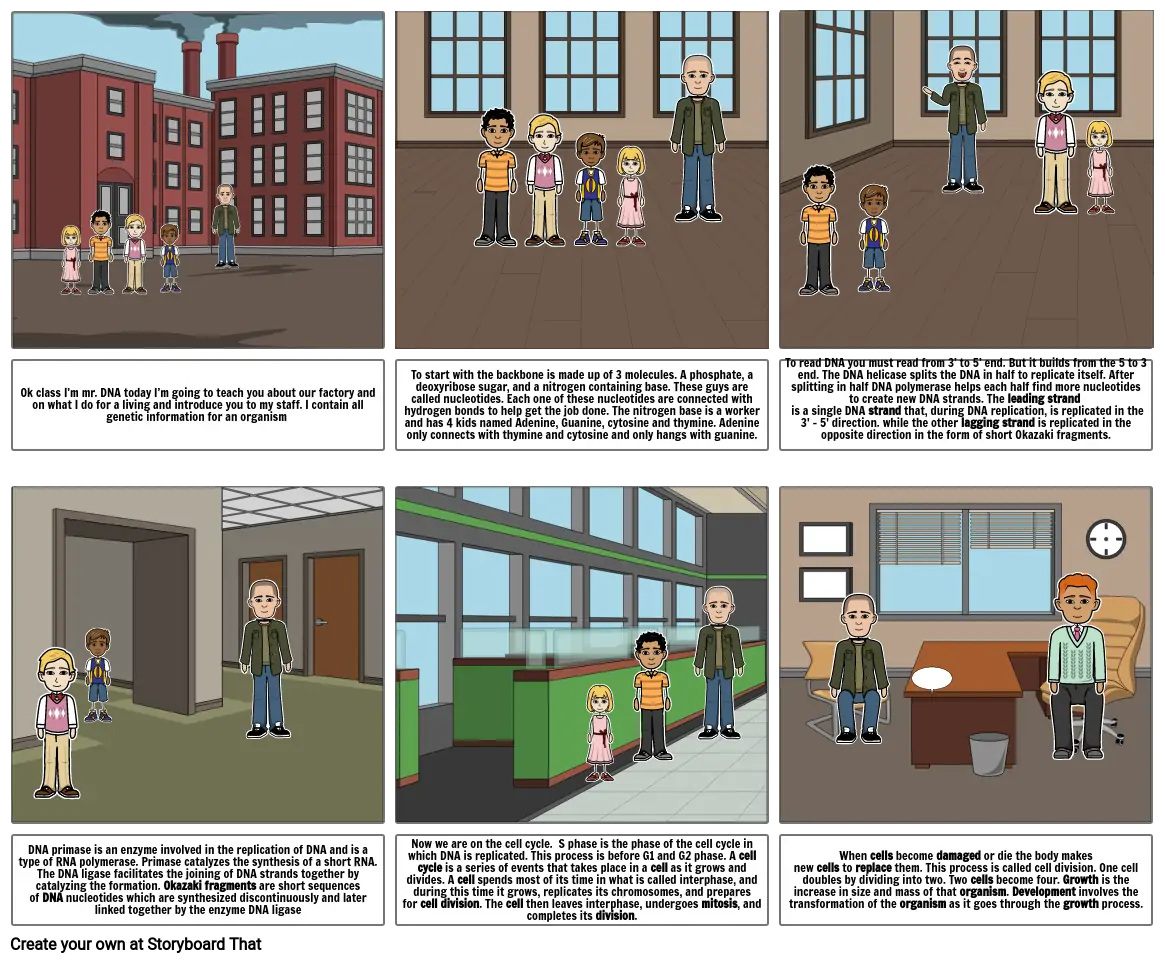DNA replication

Storyboard Tekst
-
-
- Ok class I’m mr. DNA today I’m going to teach you about our factory and on what I do for a living and introduce you to my staff. I contain all genetic information for an organism
- To start with the backbone is made up of 3 molecules. A phosphate, a deoxyribose sugar, and a nitrogen containing base. These guys are called nucleotides. Each one of these nucleotides are connected with hydrogen bonds to help get the job done. The nitrogen base is a worker and has 4 kids named Adenine, Guanine, cytosine and thymine. Adenine only connects with thymine and cytosine and only hangs with guanine.
- To read DNA you must read from 3’ to 5’ end. But it builds from the 5 to 3 end. The DNA helicase splits the DNA in half to replicate itself. After splitting in half DNA polymerase helps each half find more nucleotides to create new DNA strands. The leading strand is a single DNA strand that, during DNA replication, is replicated in the 3' – 5' direction. while the other lagging strand is replicated in the opposite direction in the form of short Okazaki fragments.
-
- DNA primase is an enzyme involved in the replication of DNA and is a type of RNA polymerase. Primase catalyzes the synthesis of a short RNA. The DNA ligase facilitates the joining of DNA strands together by catalyzing the formation. Okazaki fragments are short sequences of DNA nucleotides which are synthesized discontinuously and later linked together by the enzyme DNA ligase
- Now we are on the cell cycle. S phase is the phase of the cell cycle in which DNA is replicated. This process is before G1 and G2 phase. A cell cycle is a series of events that takes place in a cell as it grows and divides. A cell spends most of its time in what is called interphase, and during this time it grows, replicates its chromosomes, and prepares for cell division. The cell then leaves interphase, undergoes mitosis, and completes its division.
- When cells become damaged or die the body makes new cells to replace them. This process is called cell division. One cell doubles by dividing into two. Two cells become four. Growth is the increase in size and mass of that organism. Development involves the transformation of the organism as it goes through the growth process.
Over 30 millioner Storyboards oprettet

